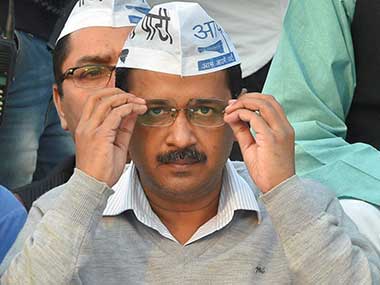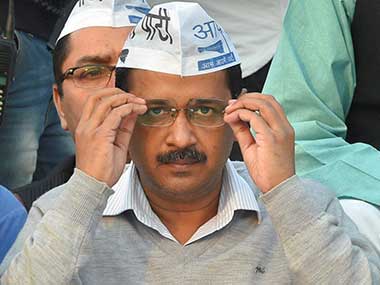As per the Padma Purana (one of the 18 maha-puranas of Hinduism), Yayati was a ruler who took good care of his subjects. Due to his munificence, he had accumulated a lot of punya (divine goodwill) and as a result seemed to be as young as a 16-year-old even when he was, in reality, 150 years old. However, as is often the case, this soon led to complacency, and Yayati, the paragon of virtue and righteousness, was found lending himself to sybaritic material pleasures. To teach him a lesson, Indra Devta, sent old age into Yayati’s body and disease, strife, and sorrow stalked his kingdom. In desperation, Yayati pleaded with his four sons that one of them should exchange their youth with Yayati’s old age, so that Yayati may, once again, taste the sweet fruit of vigour. Similar to Yayati, Arvind Kejriwal, after his resounding victory in 2015, devoted too much time and precious capital on fruitless political pursuits which emanated from a complex menagerie of improper planning; lack of far-sightedness; pretentious advisers; and ersatz self-indulgence. The upshot was that the defence of his ‘Delhi’ fortress was left unguarded and riven with opportunists within and opponents without.[caption id=“attachment_6008251” align=“alignleft” width=“380”]  File image of Delhi chief minister Arvind Kejriwal. PTI[/caption] Just like Yayati, in the end, tried to exchange his old age for youth, Kejriwal, too, just before the impending Delhi elections, is trying to trade his multiple political follies for a clean image. To reinforce this, the AAP convener and Delhi chief minister is announcing a string of populist schemes, knowing well that last-minute freebies seldom do not boomerang. Even Prime Minister Narendra Modi tried something similar before the 2019 elections, through the announcement of hastily planned Rs 6,000 pay-outs to farmers. That earned him the universal derision of farmers. In the end, Modi won the election not on any government scheme or freebies, but on the basis of his personal charisma and a strong and far-reaching nationalist sentiment. Kejriwal’s revival can only happen if he secures for himself a comprehensive victory (around 60 seats) in the upcoming Delhi elections. As the position stands today, AAP will come second to BJP (the most likely scenario), notwithstanding BJP’s faction-ridden Delhi unit and entirely due to Modi’s charisma, Article 370 abrogation, and the possible announcement regarding the Ram Mandir. This time, BJP will not repeat the mistake of fielding a weak chief ministerial candidate. Rather, Kejriwal should be ready to face some really strong ones like Kumar Vishwas (immensely popular with the middle class and youth) or Manoj Tiwari (the heart-throb of Purvanchalis in Delhi) or the ever-reliable Harsh Vardhan. Even if AAP wins the elections, it will do so only marginally – say 35-38 seats in a house of 70 where the half-way mark is 35. Such a victory would be no less than a curse, for then Kejriwal will be beholden to the whims of his MLAs for the ever-present risk of their defection. Remember, Sheila Dikshit who in 2008 having won the elections with a sliver of a margin, first struggled to form her cabinet for over a month, and then throughout her fractious last term in managing the demands of heavyweights, before withering away into a void of political obscurity? If Kejriwal wishes to transform his political fortunes within a span of 2-3 months, this is what he has to do.
- Iron grip over Delhi’s caste and religion vote banks
Kejriwal’s unwillingness to engage in politics of caste and religion is a major roadblock in winning the Delhi elections and his lofty political aspirations. To demonstrate the expansive point, let us look at three communities of Delhi: Khatris, Purvanchalis, and Muslims. (a) Khatris Khatris constitute about 8 percent vote share (approx. 10.5 lakh voters) in Delhi. Traditionally, the Khatris’ political affiliation lay first with the Jan Sangh and then the BJP, for the Khatris always held the Congress responsible for the partition and for their displacement from Pakistan. In Delhi, BJP was, for many decades, a bastion of Khatris: from Kidar Nath Sahani to VK Malhotra to Madan Lal Khurana to Jagdish Mukhi. However, in recent times, Delhi BJP has preferred Bania and Purvanchali leadership over Khatris. Traditionally, the majority of Khatris have shared an uneasy relationship with both Banias (mercantile rivalry) and Purvanchalis. Therefore, today, the Khatris of Delhi feel neglected and are annoyed with BJP. Despite this, they are still disinclined to vote for AAP, because they perceive it as a Bania party, and Kejriwal has been remiss in making any special efforts to reach out to the Khatris. Ergo, Khatris of Delhi will vote for BJP only at the end of the day. (b) Purvanchalis Delhi has around 30-40 lakh Purvanchalis who constitute about 25 percent vote share and have the biggest influence in Delhi’s politics. The Purvanchali vote is completely decisive in 20-25 seats and holds the balance of power in another 10-15. BJP has been aggressively and successfully wooing Purvanchalis by anointing Manoj Tiwari as president of its Delhi Unit. Tiwari — a very popular Bhojpuri film actor & singer — attracts Purvanchalis to BJP like bees to honey. As much as Kejriwal may deny, his politics of ‘class’ stands nowhere in front of the raw appeal of Pradesh (Bihar and Eastern Uttar Pradesh) and Jaati (Bhumihar, Kurmi, Koeri). The Purvanchali leaders in his party also do not help his cause. In the Delhi elections, the Purvanchalis will cast their vote, en-masse, in favour of BJP. (c) Muslims Traditionally, in Delhi, Muslims have been with Congress, but in 2015 they shifted to AAP. However, in view of Kejriwal’s lack of engagement with the Muslims of Delhi on issues which concern the community as a whole, the Muslim vote will be splintered between AAP, Congress and to some extent even BJP. Congress in Delhi, regardless of its current poor state, enjoys a residual Muslim support at any given point of time. But why BJP? Since 2015, BJP has cultivated support of backward Pasmanda Muslims (Ajlaf and Arzal) and has managed to make significant in-roads. BJP even damaged AAP, fatally, in the 2017 MCD Elections by fielding Pasmanda Muslim candidates in all five Muslim majority wards. For example, in the Zakir Nagar (Okhla) ward, the Congress got 11,000 votes, while AAP got 9,700 votes, and BJP’s Pasmanda candidate 2,000 votes, thereby denying AAP a close victory. There are many other such important communities in Delhi, and to win over them before the elections, Kejriwal needs to start engaging with them on issues which are pertinent to that specific community, using innovative methods, administrative heft, and a willingness to wade in the murky but necessary waters of identity politics.
- A ‘rooted’ personality cult around Kejriwal
Kejriwal, without doubt, needs to undertake incessant self-branding for he is the most important and only asset of AAP. His personality cult should be rooted in the local milieu of Delhi and our ‘traditional’ society - middle-class family man (doting husband, strict father, obedient son); approachable and open (a clever revamp of his daily Janta Durbar); man of the people (through articles on moral issues in the common man’s lingua-franca, Hindi, not English), and so on. But what is happening presently? Something completely opposite. Kejriwal is undertaking a series of Obama-style outreach campaigns in order to change his image from that of an angry young politician who is inconsistent in his politics to one who is mellow; a skilful administrator; and a samyavadi (class egalitarianism). However, these glittery campaigns with all their surface pizzazz, popularity in the small closed world of Twitter, and appeal to the educated and elite, have little or no bearing on Delhi’s ground politics. Writing ‘English’ op-eds in leading Indian dailies will not endear him to the middle class nor will his belated public campaigns against dengue and pollution convince Delhi-ites of his unflinching dedication to their welfare.
- An appealing political (and not administrative) programme for Delhi
Kejriwal, much to the detriment of his political fortunes, has focused all his energies, solely, on reforming policy sectors like education, health, transport etc. (though it is debatable as to how effective these ostensible reforms have turned out to be). Issues of policy are largely inconsequential in electoral politics and while may garner the people’s sympathy for some time, but never their miserly vote. To give credence to this assertion, let us go back to the 1960s – Chomu constituency in Rajasthan. Sher Singh was the local Swatantra Party MLA who improved the education and health facilities by leaps and bounds and was the cynosure of all eyes. However, typical of Indian politics, Sher Singh’s nephew Bhim Singh wanted the MLA seat for himself and set out to defeat his uncle in the next election. Bhim Singh exploited the natural caste divisions between the Rajputs (majority) and the Non-Rajputs (minority) and talked about conciliation at one place while polarisation at another. It was no surprise, then, that Bhim Singh won while Sher Singh and his good intentions were relegated to the bin of history. This example only goes to show what common political sense would also inform us – people are thirsty for vivacious political leadership and not the drudgery of mere administration. Do something for them today, and while casting their vote, they will think, “He could have done more”. That is why it is political, rather than administrative, pegs on which a seasoned politician hangs his entire election campaign. Unfortunately, such a political peg is conspicuous by its absence in Kejriwal’s campaign. To rectify this, he needs to devise a structured and appealing political programme on the lines of Indira Gandhi’s Dus Sutriya Karyakram which she introduced in 1969 – the living manifestation of Garibi Hatao and which secured for her a landslide victory in 1971. Some concrete and doable things should be implemented immediately, while others may happen in future. As it did then, it will do now too – create a positive political mahaul for Kejriwal. Will Kejriwal heed this advice and reverse his Yayati syndrome? Come February and we all will know. The author is an independent columnist.


)
)
)
)
)
)
)
)
)



